Transcending and Including the Ego
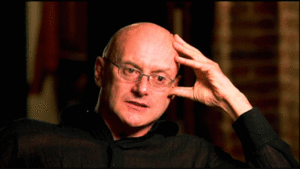
Some years ago I caused something of a scandal when I pointed out that the original Sanskrit root of the word “Yoga,” meant “Union,” and that the objective of the spiritual path was not to get rid of the ego and of our imperfections, but instead to embrace and transform them.
Much later I discovered that I was not alone in my understanding:
“Transcending the ego” thus actually means to transcend but include the ego in a deeper and higher embrace, first in the soul or deeper psychic, then with the Witness or primordial Self, then with each previous stage taken up, enfolded, included, and embraced in the radiance of One Taste. And that means we do not “get rid” of the small ego, but rather, we inhabit it fully, live it with verve, use it as the necessary vehicle through which higher truths are communicated. Soul and Spirit include body, emotions, and mind; they do not erase them.”
–Ken Wilber (American Philosopher, 1949-)
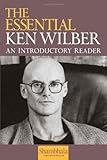
“The Essential Ken Wilber: An Introductory Reader.” (Ken Wilber)
Are You Meant For the Path?
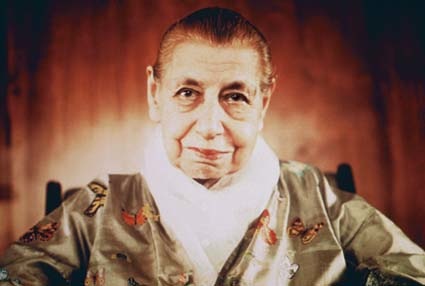
I constantly meet people who tell me that they want to follow a spiritual path, but then begin to flounder when I ask them “Why?” or “What are you going to commit to doing on your Path?”
This a a fine expression about the Path by the close spiritual collaborator of Sri Aurobindo.
“What do you want the Yoga for? To get power? To attain to peace and calm? To serve humanity? None of these motives is sufficient to show that you are meant for the Path.
The question you are to answer is this: Do you want the Yoga for the sake of the Divine? Is the Divine the supreme fact of your life, so much so that it is simply impossible for you to do without it? Do you feel that your very raison d’etre is the Divine and without it there is no meaning in your existence? If so, then only can it be said that you have a call for the Path.
This is the first thing necessary – aspiration for the Divine.
The next thing you have to do is to tend it, to keep it always alert and awake and living. And for that what is required is concentration – concentration upon the Divine with a view to an integral and absolute consecration to its Will and Purpose. Concentrate in the heart. Enter into it; go within and deep and far, as far as you can. Gather all the strings of your consciousness that are spread abroad, roll them up and take a plunge and sink down.
A fire is burning there, in the deep quietude of the heart. It is the divinity in you – your true being. Hear its voice, follow its dictates.”
–The Mother of Pondicherry (a.k.a. Mirra Alfassa, French-born Indian Spiritual Teacher, 1878-1973)
Expressing Spirituality
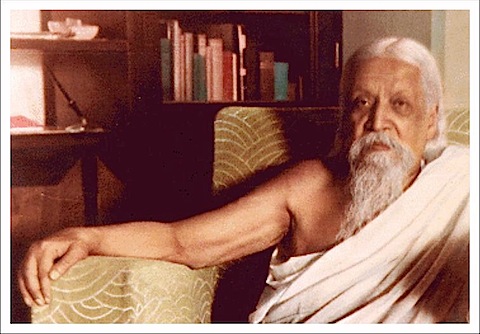
“The spiritual life finds its most potent expression in the man who lives the ordinary life of men in the strength of the Yoga…”
–Sri Aurobindo (a.k.a. Aurobindo Ghose, Indian Nationalist Leader, Mystic, Philosopher and Creator of Purna (Integral) Yoga, 1872-1950)
Can a Pain in the Neck Raise Your Blood Pressure?
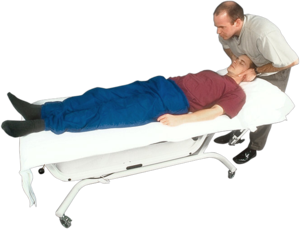
A chance discovery at the University of Leeds in the United Kingdom may give credence to longstanding claims by chiropractors that treating pain and stiffness by adjusting the neck can also lower blood pressure.
In a study published in the Journal of Neuroscience Jim Deuchars and his team report finding connections between rats’ neck muscles and a specific region of the brain. Their findings indicate that the neck muscles could play a key role in controlling blood pressure, heart rate and respiration.
They found that nerves run from receptors in the neck muscles to a region in the brainstem called the nucleus tractus solitarius that is known to be involved in the control of autonomic nervous system. It seems likely that signals from the neck could play a key role in ensuring an adequate supply of blood to the brain as we change position, for instance standing up suddenly. If the signaling system fails we may run into problems with low blood pressure (postural hypotension) and difficulties with balance.
Although it is early days, and it is a long way from a rat study to understanding human physiology, the finding may do more than provide a tentative explanation for the chiropractic reports. It may also explain another puzzle: why some people with whiplash injuries get trouble with their blood pressure. On the other hand, there have been a number of studies that have shown that the practice of yoga may help control blood pressure. It had been assumed that it was simply a consequence of generalized relaxation, but perhaps it is more specific than that: could a soft flexible neck be important in maintaining a healthy blood pressure?
The best research studies are the ones that suggest more questions than answers: on that criterion this is a most important study.
Non-pharmacological and Lifestyle Approaches to Attention-Deficit/Hyperactivity Disorder: 11. Integrated Medicine

The whole point of Integrated Medicine and Integrated Health is to help the person with attention-deficit hyperactivity disorder (ADHD) to become integrated as a person by using an integrated approach to treatment. This kind of comprehensive approach is particularly important for many people with ADHD. I also want to re-emphasize that although ADHD is the approved term for the problem, many people, particularly adults, may have little overt evidence of hyperactivity, and they are better thought of as having “ADD.”
Attentional problems come in all shapes and sizes. Some are so mild that people just need to be shown how to use a day planner and implement some time management scheme. Others need a more aggressive and comprehensive approach. Whatever we do has to be individualized to the person with the problem. Not only do we have to match the plan with the person, we also need to match it with his or her belief system.
It is important to recognize that no one approach is likely to work on its own. Medications may be very helpful, but they are only tools to help people get organized so that they can fulfill their potential. And medications are unlikely to be effective unless we also deal with nutrition, posture, breathing, sleep and environmental stress.
It is also essential to realize that ADHD is highly co-morbid: there is evidence of increased rates of physical problems, including disturbances in thyroid function and cell membrane function throughout the body. The rates of conduct disorder, oppositional defiant disorder, learning disabilities, tics and Tourette’s, worry, anxiety and mood disorders are all much higher in people with ADHD. So high that until recently, many experts believed that ADHD was a symptom rather than a clearly delineated illness. This overlap is also one of the reasons why some people persist in saying that the diagnosis of ADHD is nothing more than a stigmatizing label for socially unacceptable behavior.
Physical
- Medications
- Nutrition
- Posture
- Exercise
- Environment
Over the last few weeks we have spent a lot of time looking at some of the options for treating the physical components of the problem. Now let us look at the rest.
Psychological
- Find out and work with a person’s interests. ADHD is highly dependent on context. A child or adult may have terrible problems with schoolwork, but be able to play a video game for hours on end
- There are multiple intelligences: uncover which are of the greatest importance. It is essential for a person to discover their strengths rather than being forced to focus on the weaknesses. Many people with ADHD find that highlighting text in a book can be useful, while others learn by doing
- People are more likely to follow instructions if they are interesting and emotionally charged
- Bear in mind that many people have poor self-esteem and others suffer from enormous feelings of regret. This is a particular issue for people who may have reached middle age before being diagnosed. We have seen countless people who feel that they have missed out on life. A man working in construction realized that he could have gone to college thirty years ago if only his ADHD had been diagnosed and treated
- Teach visualization skills
- Discover which times of the day are best in terms of attention and alertness
- Learn some simple relaxation techniques
- Learn problem-solving skills
Social
- ADHD can play havoc with relationships. If a child has it, there can be enormous stress on the parents and siblings, all of whom are at higher risk of some features of ADHD themselves. It is essential to help the family with coping skills. ADHD can also put a great deal of stress on a spouse or children. It is also important to know that many people with ADHD have sexual problems that stem from impatience, a low frustration threshold if they cannot have sex when they want it, and real problems with enjoying the moment and taking time to enjoy a romantic interlude. Some people also use sex as a form of self-medication. So it is essential to find out if there are sex or relationship problems and to deal with them, which may need outside help
- Many people with ADHD are socially awkward and may need to learn some social and communication skills
- ADHD and social awkwardness can be magnets for bullies, and it is remarkable how many young people with untreated or inadequately treated ADHD have been bullied. Occasionally they become the perpetrators of bullying to compensate for their difficulties. In either case it is important to discover and deal with bullying. It is one of several reasons why some experts have recommended enrolling a child in martial arts classes. Not only can they help with self-defense, but also the discipline of a martial arts class can work wonders for some people with ADHD
- Role models are important for people with ADHD. It is very helpful, particularly for young people to see that other sufferers have become extremely successful
- It is also important for parents and other family members to develop and maintain a positive image of the person with ADHD
- Develop positive yet realistic career and life goals
Subtle
- Poor breathing techniques can engender many problems. Learning to breath effectively can have profound physical effects as well as stimulating and balancing the subtle systems of the body
- As we have seen, although the research base is very small, yoga, t’ai chi ch’uan or qigong can all be very helpful
- Many people with ADHD are acutely sensitive to “atmosphere:” to the thoughts, feelings and attitudes of other people, and they need specific help to remain grounded and to protect their senses. Some of the flower essences can very helpful for that, as well as some other techniques that we shall be publishing shortly
Spiritual
- How can there be a spiritual component to ADHD? Some people find it difficult to engage in prayer or meditation because of problems with attention. However, with a little perseverance, we have evidence that some forms of meditation may actually help.
- Second the rituals of religion can sometimes provide a wonderful anchor for the person who is having a had time with ADHD.
- Another point is that ADHD is not all bad. Some people who have it become more attuned to nature, animals and to a mystical understanding of the world: an over-reliance on reasoning and linear learning can stifle those perceptions.
- Some people have suggested that ADHD may for the same reasons unlock a rich vein of creativity that might otherwise never have appeared.
There are plenty of books and websites that portray ADHD as a gift. While I have the greatest respect for this approach, it is still important for us not to forget the demonstrable problems caused by inadequately treated ADHD.
ADHD exists, it is treatable, and though it can bring many problems, it can also bring many opportunities. Just so long as we remember to respect every dimension of the person who has it, and remember that if we do not manage it, it will manage us.
Non-pharmacological and Lifestyle Approaches to Attention-Deficit/Hyperactivity Disorder: 7. Yoga, Meditation and T’ai Chi Ch’uan

It may seem strange that someone with an attentional problem could sit still long enough to do yoga or meditation, but here is some evidence that they can do them and derive long term benefit.
Yoga
There are hundreds of different types of yoga, but the one that has been examined the most is hatha yoga. The first report of an improvement in ADHD symptoms with relaxation training including a yoga component was published in 1992. There is a small peer-reviewed study of yoga for children with ADHD. It was a six-week open trial of twice weekly hatha yoga lesson for both parents and children. The participants were also encouraged to practice at home. At the end of the six weeks, there were subjective improvements in behavior, and in those who practiced at home there was an improvement in emotional lability.
Another pilot study this time from Heidelberg in Germany suggested that yoga can be an effective complementary or concomitant treatment for ADHD. That was also the conclusion from a recent review article: yoga, like most of the other complementary methods of treatment, may be a good adjunct, but we do not have enough evidence to use it in place of existing treatments.
That being said, many experts and many yoga teachers consistently report that they have students who have improved very markedly when they follow a regular yoga regimen.
Meditation
Eugene Arnold’s excellent review of unorthodox treatments for ADHD cites two studies from the 1980s that showed significant improvements in the behavior of children who were taught to practice meditation. (Kratter J. The use of meditation in the treatment of attention deficit disorder with hyperactivity. Dissertation Abstracts International 1983;44:1965 and Moretti-Altuna G. The effects of meditation versus medication in the treatment of attention deficit disorder with hyperactivity. Dissertation Abstracts International 1987;47:4658.) Neither of the reports is easily available and the studies were not published in peer-reviews journals. A small six-week pilot study using Sahaja Yoga meditation for children with ADHD and their families reported a small but useful benefit.
Although there is not much published research on the use of meditation and ADHD, there are a great many anecdotal reports, and some good theoretical reasons for thinking that it should help. Research has shown that expert meditators produce both structural and functional changes in their brains, particularly in the regions involved in attention.
T’ai Chi Ch’uan
There are a large number of reports of people with ADHD improving if they practice t’ai chi or qigong, and in the days that I taught them, I have seen some remarkable improvements. But sadly there are few peer-reviewed studies in any of the languages that I can read.
There is a small but interesting study that was published in the Journal of Bodywork & Movement Therapies and involved 13 adolescents with an average age of 14.5 years. They were taught some basic t’ai chi moves for 30 minutes twice a week for five weeks. The sessions consisted of breathing exercises accompanied by slow raising and lowering of the arms, twisting and turning of the arms and legs, shifting body weight, rotating and changing direction.
The researchers used the 28-item Connors’ Teacher Rating Scale was used to evaluate their behavior prior to the tai chi classes, during the classes and two weeks after the classes ended. The adolescents’ teachers perceived them as less anxious, emotional and hyperactive. These improved scores remained consistent throughout the two-week follow-up period.
Given the anecdotal reports of the benefit of t’ai chi ch’uan and qigong on attention, concentration, depression and anxiety, it is important to do some more research on them n ADHD. In the meantime, there is no known downside of someone with ADHD using these practices in combination with more orthodox approaches.
And if they help, I would like to hear about it!
Yoga Improves Concentration and Motivation
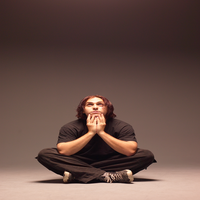 We know that hatha yoga can improve balance and flexibility, and there has been evidence that it can have more profound effects on the body and mind.
We know that hatha yoga can improve balance and flexibility, and there has been evidence that it can have more profound effects on the body and mind.
Now some new research confirms something else that we have suspected: it can also lessen anxiety and improve concentration and motivation in as little as eight weeks.
The research was presented in New Orleans at the 54th Annual Meeting of the American College of Sports Medicine. Researchers from California State University in San Bernardino wanted to quantify the benefits of yoga beyond just strength and flexibility.
The investigators tested 84 students during the second and eighth weeks of four, 10-week hatha yoga classes at the University. 93% of the participants were female, 45 percent were Hispanic, 35 percent “Caucasian,” seven percent African-American, and two percent Asian. The students averaged 24 years of age; most had at least three months of consistent yoga experience prior to the class. (Why the quotes around “Caucasian?” I just don’t like the term. I am white and not from the Caucasus. I am also a nit picky Virgo…)

Two weeks and again nine weeks into the class, participants completed three standard assessments to measure their concentration, motivation and anxiety level. The results were dramatic. In just eight weeks of practice they measured significant increases in all three areas.
The research will be expanded to include more men, and also to see how these findings can be applied to sports and clinical treatment.
The researchers have opened up a fascinating field for further study, and I shall continue to report on the data as it comes out.
Yoga and the Brain
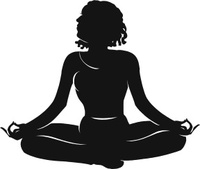
Depression and anxiety are increasingly common throughout the world, and although each may be a consequence of psychological and environmental stresses, there is also a genetic predisposition and an increasing number of reproducible disturbances in the brain.
In recent years, there has been increasing interest in the role of brain gamma-aminobutyric acid (GABA) levels, which is the brain’s primary inhibitory neurotransmitter, in both depression and anxiety, following the finding that each may be associated with low levels of GABA in different regions of the brain.
There have also been reports that yoga may help stress and anxiety as well as depression.
Now colleagues from Boston University School of Medicine (BUSM) and McLean Hospital have found that practicing hatha yoga may elevate brain GABA levels.
This new research is published in last month’s issue of Journal of Alternative and Complementary Medicine.
The researchers used magnetic resonance spectroscopic imaging to compare the GABA levels of eight subjects before and after one hour of yoga. The control group consisted of 11 people who read a book or magazine instead of doing yoga. They found a twenty-seven percent increase in GABA levels in the yoga practitioner group after their session, but no change in the comparison subject group after an hour spent reading.
It is too early to start recommending yoga for the treatment of depression or anxiety, but it is fascinating that it will produce changes in brain chemistry that are very similar to those that we hope to achieve with other forms of therapy.






